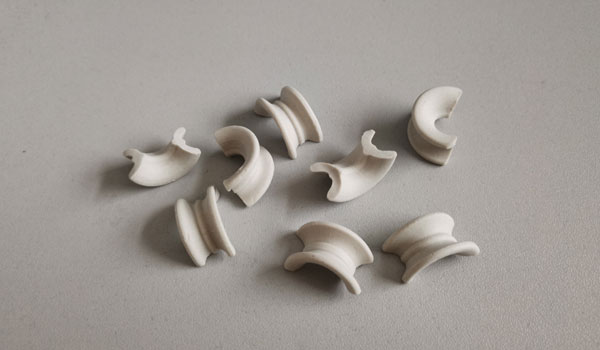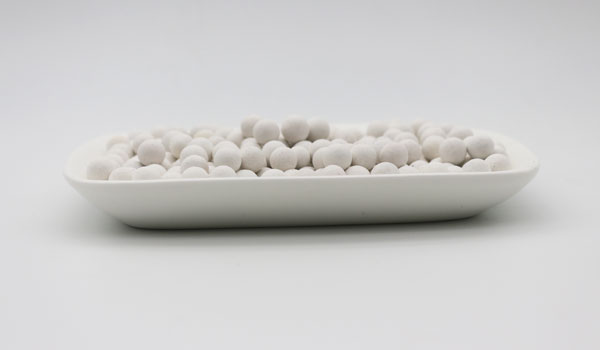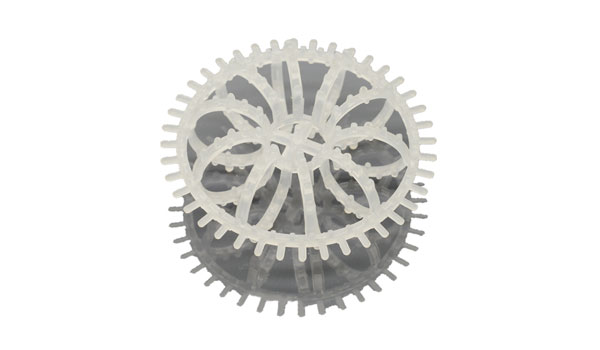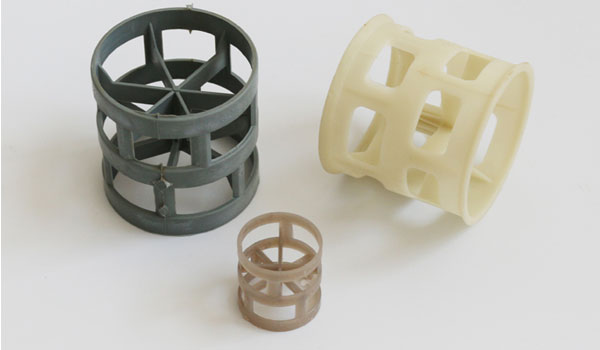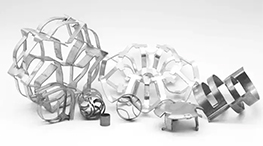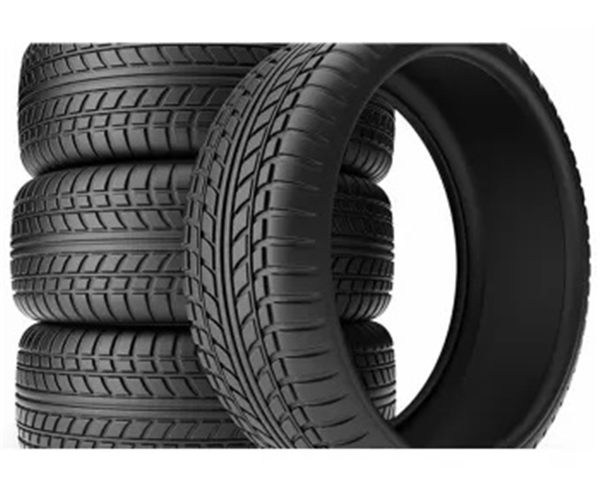Ceramic Saddle Packing
Intalox saddles ceramicPacking is divided into two different types of products according to their properties, one is often used in the field of Chemical and Petrochemical industries, another is mainly used in environmental areas such as RTO (Regenerative Thermal Oxidizers) equipment. But both of them are the most frequently used high-performance packing and exhibit advantages for most applications in comparison with other shapes. Their smooth surface imparts a high chemical resistance and provides Ceramic intalox saddlesrings (Ceramic Intalox Saddle) with a high level of stability. Due to their simple form, ceramic Intalox Saddle packing can be produced by ceramic saddlesmanufacturer at a relatively low cost.
Parameters of Ceramic Saddle Packing
|
Name |
Sze |
Diameter(mm) |
Weight(kg/m3) |
Pieces(m3) |
Surface Area(m2/m3) |
Void(%) |
|
Ceramic intalox Saddle Ring |
Φ13 |
13*13*2 |
880 |
450000 |
480 |
65 |
|
Φ16 |
16*12*2 |
710 |
382000 |
450 |
70 |
|
|
Φ25 |
25*19*3 |
680 |
84000 |
250 |
74 |
|
|
Φ38 |
38*30*4 |
630 |
25000 |
164 |
75 |
|
|
Φ50 |
50*40*5 |
580 |
9300 |
142 |
76 |
|
|
Φ76 |
76*57*9 |
520 |
1800 |
92 |
78 |
Advantages of Ceramic Saddle Packing
Low pressure drop and high efficiency
Large effective interfacial area
High mechanical strength
Low cost
Ceramic Saddle Packing Material
Ceramic saddle packing material is a type of random packing used in distillation and absorption columns in chemical and petrochemical industries. It consists of small, saddle-shaped ceramic pieces that are stacked in layers to create a high surface area for contact between the gas and liquid phases.
Ceramic material provides several advantages over other types of packing materials, such as plastic or metal. For example, ceramic saddle packing has a high resistance to thermal shock and corrosion, making it suitable for use in high-temperature and aggressive chemical environments. Additionally, its unique shape allows for effective liquid distribution and low-pressure drop, resulting in improved efficiency and performance of the column.
Ceramic saddle packing material is available in various sizes and shapes to accommodate different column sizes and process requirements. The most commonly used ceramic material is alumina, although other materials such as zirconia and titania can also be used. The choice of material depends on the specific requirements of the process, such as chemical resistance and temperature range.
Ceramic Saddles Application
Ceramic saddles are commonly used as packing material in distillation and absorption columns in the chemical and petrochemical industries. They provide a large surface area for the contact between the gas and liquid phases, allowing for efficient separation and purification of various chemical compounds.
Some of the applications of ceramic saddles include:
Distillation of crude oil: Ceramic saddles are used in crude oil distillation columns to separate different fractions of crude oil based on their boiling points. The large surface area of the saddles allows for efficient separation of the different components of crude oil, such as gasoline, diesel, and lubricants.
Absorption of gases: Ceramic saddles can be used to remove impurities or unwanted gases from gas streams. The gas stream is passed through a column packed with ceramic saddles, and the impurities are absorbed onto the surface of the saddles.
Chemical processing: Ceramic saddles are used in chemical processing to separate and purify various chemical compounds. They can be used for solvent recovery, dehydration, and removal of impurities from chemical streams.
Water treatment: Ceramic saddles can be used in water treatment processes to remove impurities and contaminants from water. They are commonly used in desalination processes to remove salt and other minerals from seawater.
Overall, ceramic saddles offer a high surface area, low-pressure drop, and excellent chemical resistance, making them a popular choice for various applications in the chemical and petrochemical industries.
Send product request
Other supplier products
| High Alumina Ball | High Alumina Ball Activated Alumina has the advantages of large surface area, many mciro-pores, well disperser, so it has a high affinity for wa... | |
| BETA ZEOLITE | Beta Zeolite Beta Zeoliteis the only one structured with three-dimensional 12-membered ring channels among zeolite family. It is of high activit... | |
| PLASTIC TELLERETTE RING | Plastic Tellerette Ring NAIKE Plastic Tellerette Ring was designed by Tell A J in 1956, so-called teller rosette ring. The Packing liked ellipse... | |
| Plastic Pall Ring | NAIKEPlastic Pall Ring is versatile. This product was advanced on the basis of Plastic Rasching Ring, and compared with it, both of them have simil... | |
| TELLERETTE RING | The advantage of Tellerette Ring is large void, not easy to be blocked, large flux and increase the contact time of liquid-vapor, improve the mass ... |
Same products
| LED Encapsulation Materials for General Lighting | Seller: Guangzhou Human New Material Science and Technology Co., Ltd | Good adhesion to metals, chips and other substrates Good sulfur resistance and thermal shock per... | |
| PUD Water-based Polyurethane for Textile Injet Printing Ink | Seller: Guangzhou Human New Material Science and Technology Co., Ltd | Pigment-based textile inkjet printing is a sensible technology demanding for specifically designe... | |
| Hard Coatings for Eyeglass Lenses | Seller: Guangzhou Human New Material Science and Technology Co., Ltd | Hard Coatingsare advanced protective coatings applied to surfaces to improve their resistance to ... | |
| Barrier Coatings for Paper Packaging | Seller: Guangzhou Human New Material Science and Technology Co., Ltd | Barrier coatings for paperare surface coatings applied to the paper surface to provide protection... | |
| OSi HIOSil BDAC CAS 13170-23-5 | Seller: OSi Holding Limited | Product Description Chemical Name: Di-tert-butoxydicaetoxysilane CAS No.: 13170-23-5 Typical... |









